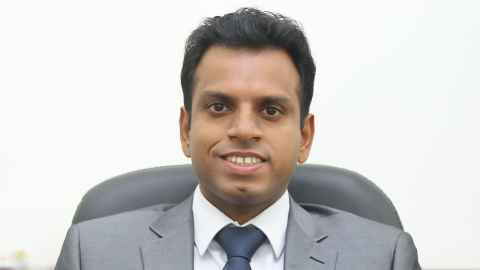Breaking the ‘make, use, dispose’ of Fashion

In the absence of human interruptions, natural ecosystems exist in a balance. This is maintained by cycles - the water cycle, the carbon cycle, the nitrogen cycle etc. However, the way humans consume has disrupted these resource cycles. We mine raw materials, process them into products, use them and then throw them away as waste. This linear consumption pattern puts pressure on resources, pollutes the environment and creates negative social impacts. To tackle the problems of this linear economy, the concept of circular economy is gaining popularity. In a circular economy, we keep resources in use for as long as possible, extract the maximum value from them whilst in use, then recover and regenerate products and materials at the end of each service life. Circular business models can be as profitable as linear models, allowing consumers to keep enjoying their quality of life, as they may in a linear economy.
The principles of the circular economy are increasingly being applied to the fashion industry, which produces 10% of humanity’s carbon emissions and is the second-largest polluter of the world’s water supply. For example, exploiting water streams for cotton cultivation caused the drying up one of the world’s four largest inland lakes, the Aral Sea. Between 2000-2015, clothing production has approximately doubled. However, the time clothing is worn before it is thrown away has fallen by approximately 20%. According to a 2017 report by the Ellen MacArthur Foundation, the equivalent of one garbage truck of textiles is landfilled or burned every second. By throwing away clothes that they could continue to wear, customers forego USD 460 billion of value each year globally.
To combat the massive impact of clothing waste, authorities, NGOs, fashion brands, recyclers, resale companies and other organisations are working to give old clothes a new lease of life through circular economy concepts. A circular fashion industry aims to continually recycle clothes and fibres, to re-introduce them to the economy as much as possible rather than sending them to landfills. There are four ambitions to a new textile economy proposed by the Ellen MacArthur Foundation:
- Phase out substances of concern and microfibre release.
- Transform the way clothes are desinged, sold, and used to break free from their increasingly disposable nature.
- Radically improve recycling by transforming clothing design.
- Make effective use of resources and move to renewable inputs.
Despite endeavours by the industry to realise these ambitions through various projects, the fashion industry is still far from being circular due to various challenges. A series of interviews I conducted with a cross section of the apparel supply chain, including retailers, op-shops and waste management companies helped me identify some of the practical problems deterring these organisations from success. With this understanding, my research is taking a mathematical modelling approach to consumer, manager and business behaviour to prescribe actions to assist in solving the puzzle.
Modelling can inform us what should be done to solve the problems – rather than describing what is happening or what could happen. For example, generation Z is said to be more aware of environmental problems and the need for sustainability action. However, a New Zealand university professor told me that an annual informal survey over the last couple of years has found the willingness of first-year students to engage in sustainability action to have deteriorated from 70% to 40%. In addition, a former CEO of one of the major retailers mentioned that gen Z seems to be the most common buyers of fast fashion in both physical stores and online. This calls for identifying the specific parameters driving action rather than simple awareness of the problem and a willingness to do something.
As John F. Kennedy said “There are risks and costs to action. But they are far less than the long-range risks of comfortable inaction.” It’s evident that this applies to breaking the linearity of the fashion industry.
Lahiru Gunasekara is a PhD candidate researching Circular Economy adoption in the Apparel Industry.